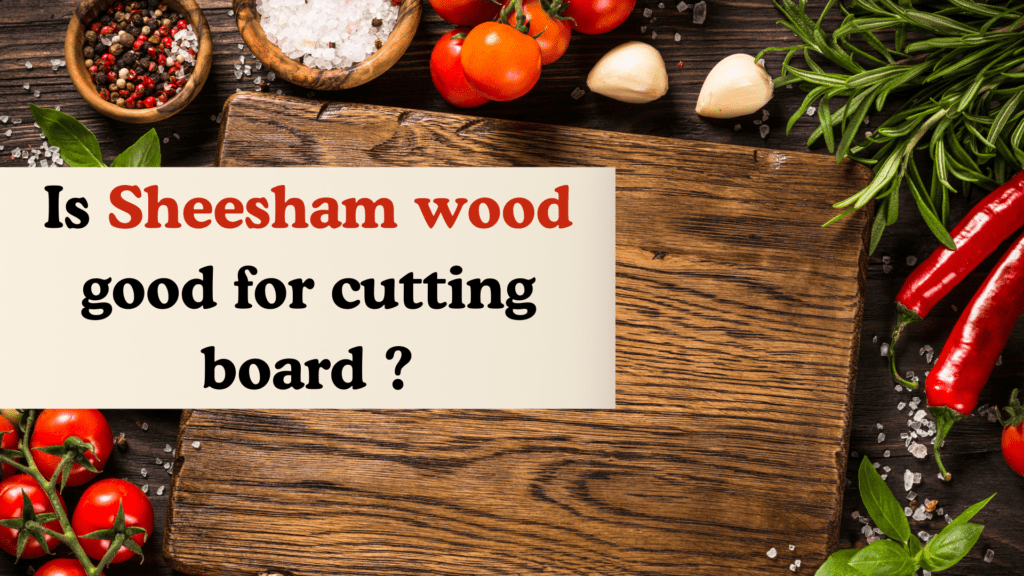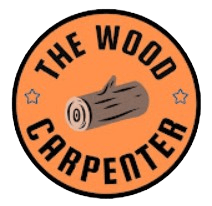
When buying kitchen items, many people ask: Is Sheesham wood good for cutting boards?
Sheesham wood, also called Indian Rosewood (Dalbergia sissoo), is well-known for being strong, long-lasting, and having beautiful grain patterns. It is mostly used for making furniture, carvings, and even flooring. But is it also a good option for cutting boards? Let’s see.
Is Sheesham wood food safe ?
Yes, Sheesham wood (also called Indian Rosewood) is usually safe for food use if it is well-seasoned, not treated with harmful chemicals, and finished with a safe oil like mineral oil. People often use it for cutting boards, utensils, and serving bowls.
👉 If Sheesham wood is raw or not sealed, it can soak up water and grow bacteria. That’s why adding a food-safe oil finish is important to keep it safe and long-lasting.
Understanding Sheesham Wood
Sheesham wood is a dense hardwood native to the Indian subcontinent. Its interlocked grain and natural oils make it resistant to termites and highly durable, which is why it’s a favorite in furniture making. However, not every hardwood is ideal for food preparation surfaces.
Pros of Sheesham for Cutting Boards
Durability – Sheesham is strong and can withstand years of use without easily denting.
Visual Appeal – Its unique reddish-brown tones and dark streaks give cutting boards an elegant look.
Affordability – Compared to premium hardwoods like teak, Sheesham is more budget-friendly.
Cons of Sheesham for Cutting Boards
While Sheesham looks great, it has some drawbacks when used as a cutting board:
Porosity – Sheesham wood has open grains that can absorb moisture and juices from food. Over time, this can lead to bacteria growth if not cleaned and maintained properly.
Natural Oils – The same oils that protect the wood from termites may not always be food-safe. Prolonged contact with raw foods could cause concerns.
Maintenance – Unlike maple or beech cutting boards, Sheesham requires extra care to avoid cracking, warping, or harboring odors.
Better Alternatives to Sheesham for Cutting Boards
If hygiene and food safety are your top priorities, consider these tried-and-tested woods:
Maple – Hard, closed-grain, and widely considered the best cutting board wood.
Beech – Affordable, fine-grained, and resistant to bacteria.
Walnut – Softer on knives and still durable, with a luxurious dark finish.
Bamboo – Technically a grass, but eco-friendly and naturally resistant to moisture.
How to Care for a Sheesham Cutting Board (If You Still Choose It)
If you love the look of Sheesham and still want to use it as a cutting board:
- Season it regularly with food-grade mineral oil to seal the pores.
- Wash only with mild soap and lukewarm water (never soak).
- Dry immediately to prevent warping.
- Avoid cutting raw meat or seafood—stick to bread, fruits, and vegetables.
Final Verdict
So, is Sheesham good for cutting board use?
While Sheesham is excellent for furniture and decorative items, it is not the best choice for cutting boards. Its porous nature and natural oils make it harder to maintain in a food-safe way. For kitchen use, closed-grain woods like maple, beech, or walnut are safer and more reliable options.
That said, if you adore the beauty of Sheesham and are willing to maintain it carefully, it can still serve as a stylish board for light food prep or as a serving board for cheese, fruits, or bread.
Also read:
7 reasons to Choose an Olive Wood Cutting Board
FAQ’s
1. Is Sheesham wood eco-friendly ?
Sheesham is considered as a eco-friendly because it is a sustainable resource & many suppliers use it responsible forestry practices. However, it’s important to ensure your Sheesham wood is sourced ethically.
2. Does Sheesham wood absorb odors ?
Like most woods, Sheesham can absorb odors if not cleaned or treated properly. Regular oiling and proper cleaning will help reduce odor absorption.
3. Can Sheesham wood stain easily ?
Sheesham wood can absorb stains if not sealed properly. However, regular oiling helps to create a protective layer that makes it more resistant to stains and spills.
4. How long will a Sheesham cutting board last ?
With a proper care, Sheesham wood cutting boards can last for many years. Regular oiling and maintenance are key to extending its lifespan and maintaining its appearance.
5. Is Sheesham wood prone to cracking ?
While Sheesham wood is sturdy, it can crack if it is not properly maintained, especially if it dries out or is exposed to extreme temperature changes. Regular oiling helps keep the wood moisturized and reduces the risk of cracking.

